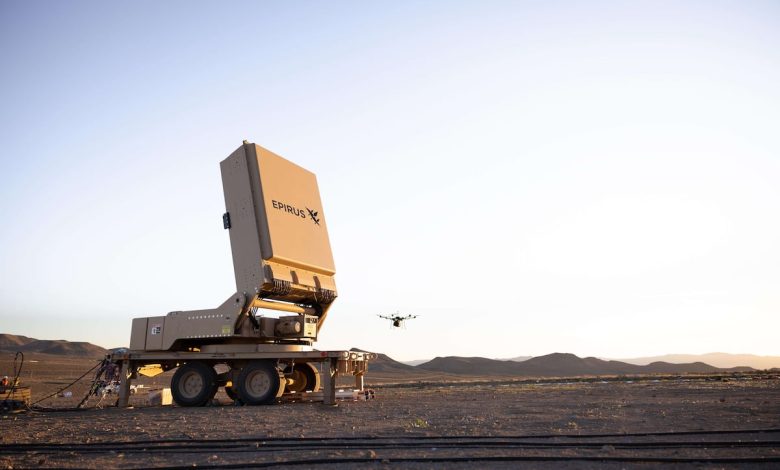Epirus debuts high-power microwave weapon to knock out boat motors

Counter-drone company Epirus unveiled a new high-power microwave system capable of disabling manned and unmanned boat motors, it announced Tuesday.
Leonidas H2O “was effective against vessel motors at record ranges” during the U.S. Navy’s Advanced Technology Exercise Coastal Trident event in Crane, Indiana, held in August 2024, according to the announcement. The system knocked out four commercially available vessel motors, varying in horsepower from 40 to 90 “at a multitude of ranges,” it noted.
The Pentagon “has spent years of research and development and spent tens-of-millions of dollars into developing a non-kinetic vessel stop solution, with no operational system deployed to date. With Leonidas H2O, we are bringing forth a technology with demonstrated effectiveness to fill this capability gap, today,” Epirus CEO Andy Lowery said in the statement.
The California-based company debuted its ground-based system designed to protect forward operating bases from incoming swarm threats in 2020 and has since proven Leonidas can adapt to other platforms, including being mounted on a drone in a pod.
“Leonidas, by its nature, it’s just an old-fashioned platform. We’ve made force fields … of electromagnetic energy,” Lowery told Defense News. “Whether that electromagnetic energy spoils a drone’s electronics from working correctly or spoils a boat’s motor, or use your imagination, anything with little computers in it and stuff, is susceptible to these persistent fields of energy.”
The recent Navy exercise proved the system — scaled down to a third of its original size — could go up against “a whole bunch of different types of boat motors out there,” Lowery said. It did so despite testing restrictions at the range limiting it from operating at full strength and from using certain frequencies.
Lowery noted that the system was effective up to nearly 100 meters working at half power.
The technology would come in handy at ports and close to coastlines, where kinetic defenses would not be a good option, Lowery said.
Adapting Leonidas for marine operations meant the company took into account that it would endure the corrosive effects of salt water, but otherwise, “the system works more or less the same,” Lowery said. “Except for one item,” he added. “It kind of uses the water as a mirror, and so [we] can use the water to our advantage, that is it hits certain spots in even further distances by using reflections off the water.”
Because of the beams’ behavior on water, the company made adaptations to the software, he noted.
One limitation of the system is that it does not work under water.
“The frequencies just don’t propagate under water. They just stop dead in like an inch of travel,” Lowery said.
Epirus continues to work to get the capability into the hands of service members. There are two systems deployed with the Army in the U.S. Central Command area of operations and a few others going to another operational area, Lowery said.
RELATED
“Operational commanders probably have the strongest voice on hitting a gas pedal and getting us moving a lot quicker,” he added.
A Navy solution, Lowery said, could be delivered “expeditiously.” The system could be packed in a container to fit on a vessel like a Littoral Combat Ship or a Coast Guard cutter, he noted.
“They can very easily put one of these on long fantail ships. Even some of these same fantail ships are in the Black Sea trying to do sort of escort control for merchants and other things running through that region,” Lowery said. “Another excellent idea is to try to hit some of the surface missiles that the Houthis and stuff are sending out. We could try our hand at disrupting some of those things as well.”
Lowery said he often points to how the Russian invasion of Ukraine in recent years has left Russia with roughly 50% of its navy capabilities destroyed, sunk or damaged beyond use by Ukrainians, with no navy, using unmanned weapons.
“We’re back into this war of the machines. We’re back into this kind of guerrilla warfare where the first wave of battle ends up becoming machines on machines,” he said. “We can have a system that has a very deep magazine that can build force fields out and take care of these, not only unmanned air vehicles, but unmanned surface vessels and unmanned ground vehicles.”
Jen Judson is an award-winning journalist covering land warfare for Defense News. She has also worked for Politico and Inside Defense. She holds a Master of Science degree in journalism from Boston University and a Bachelor of Arts degree from Kenyon College.







